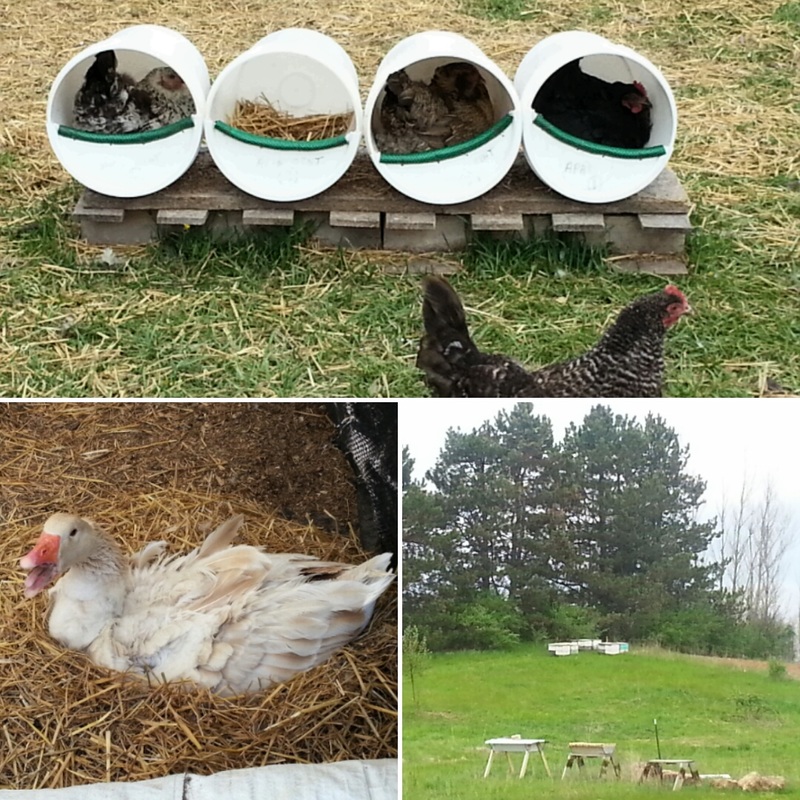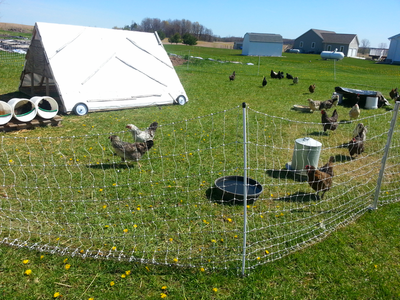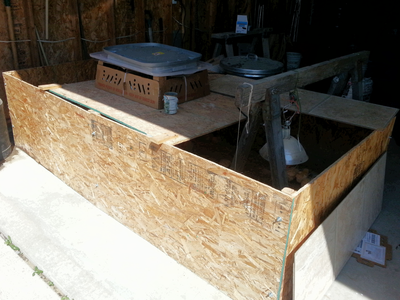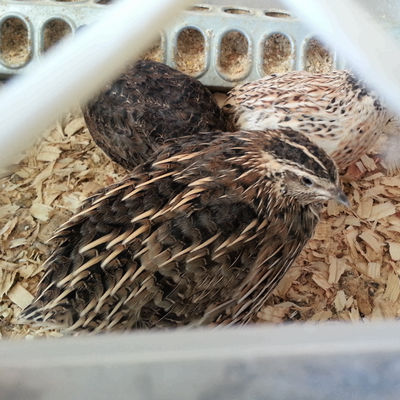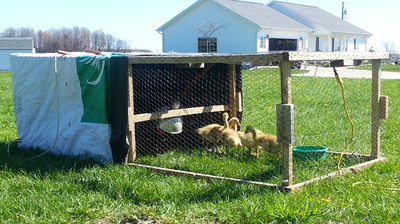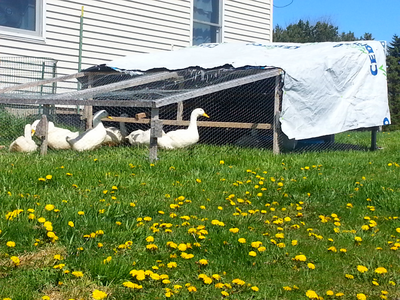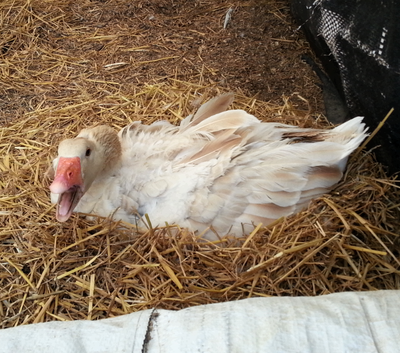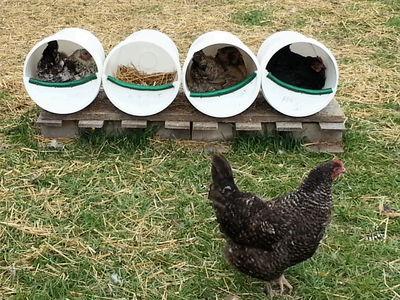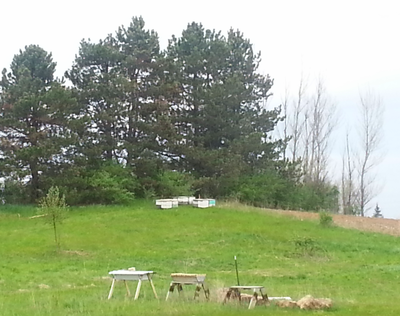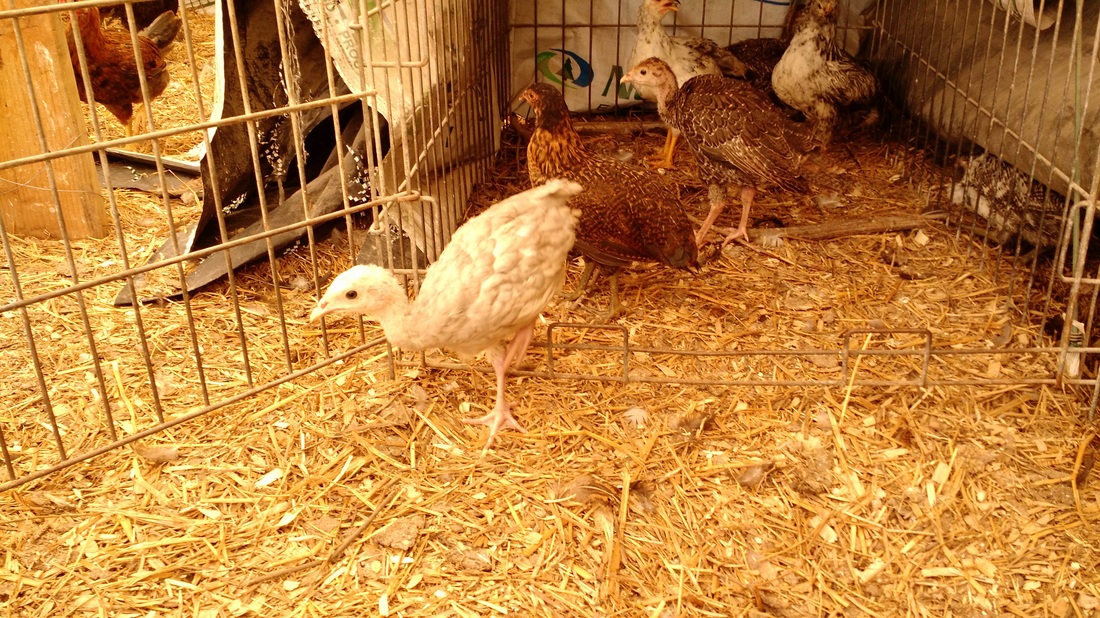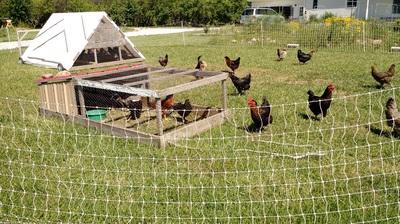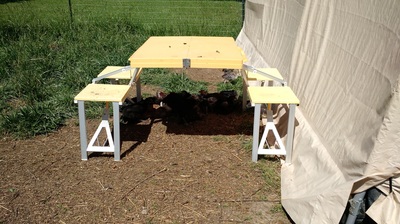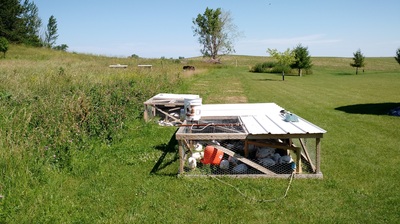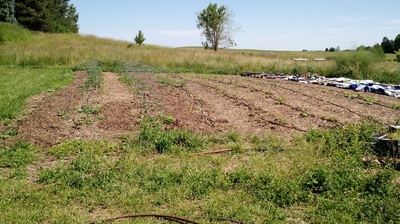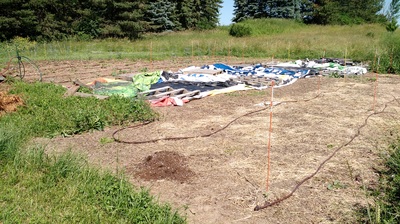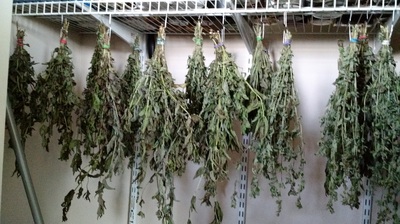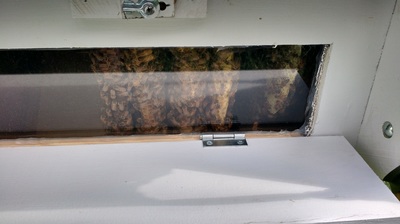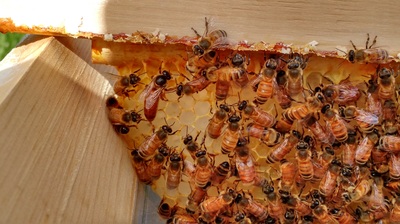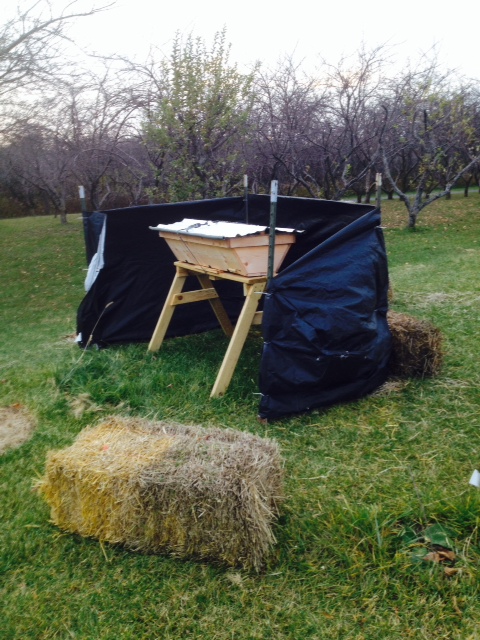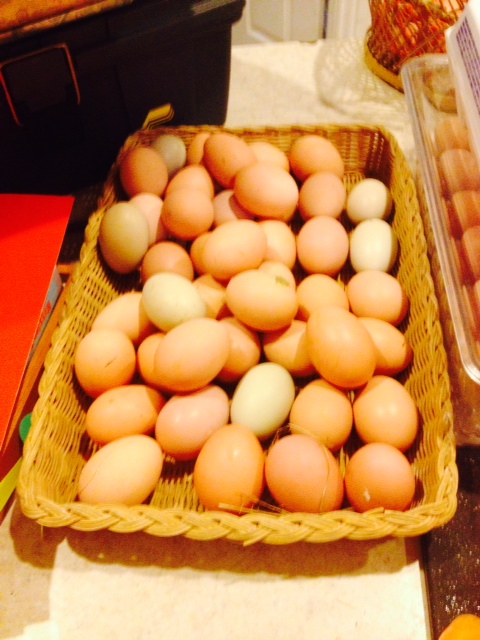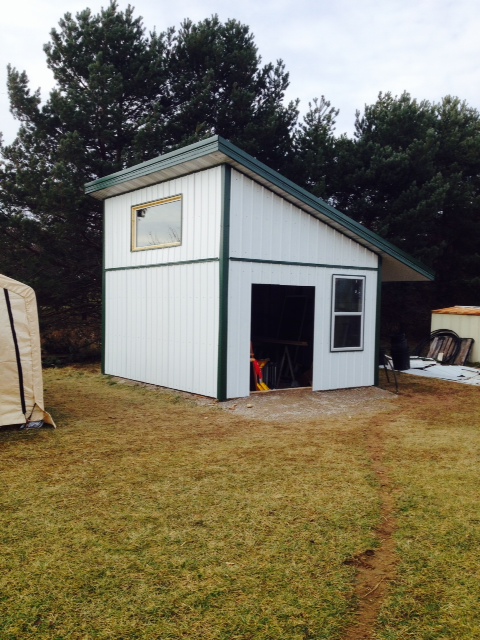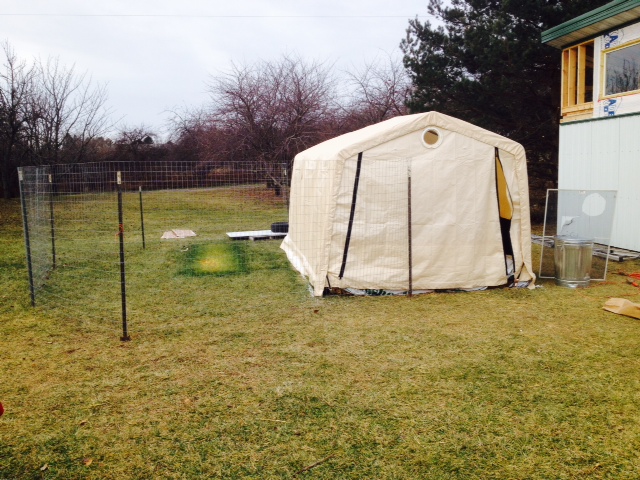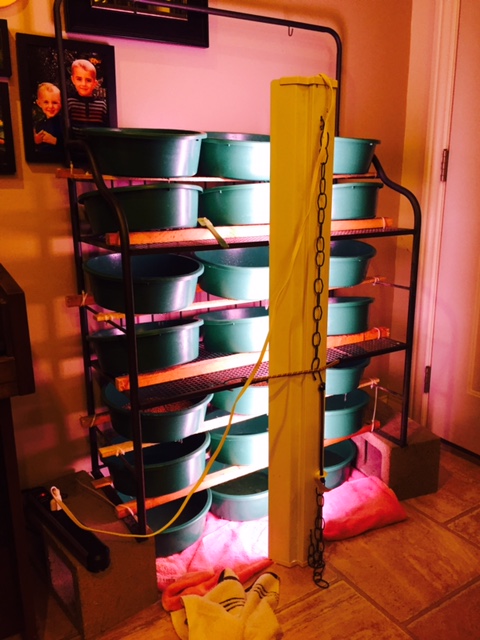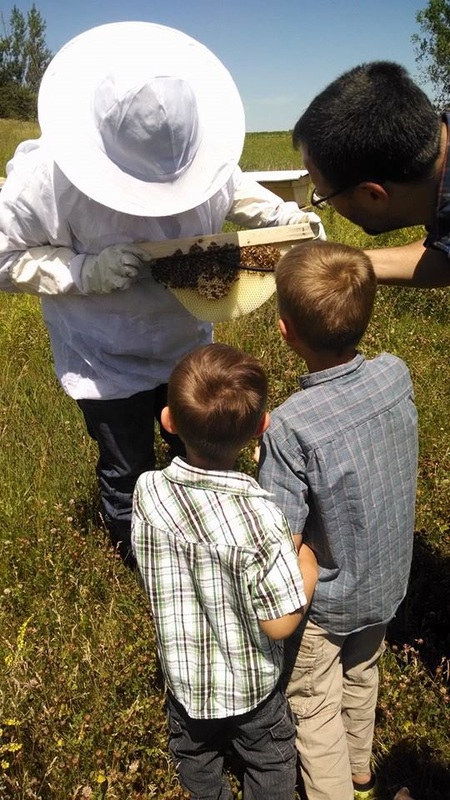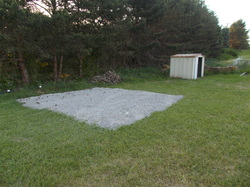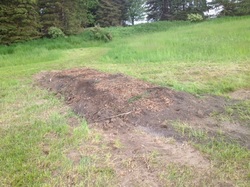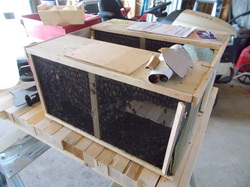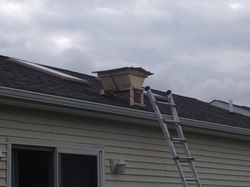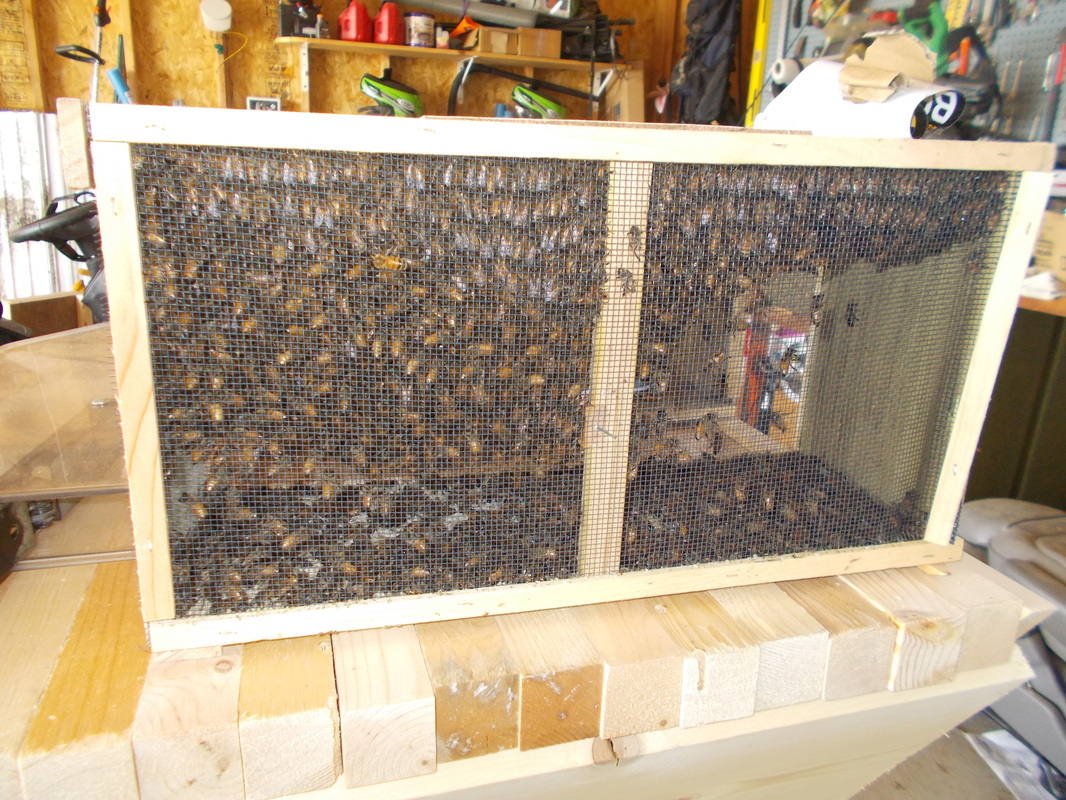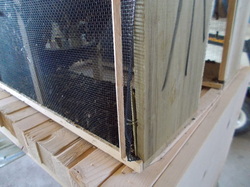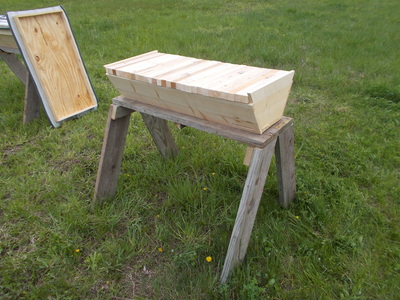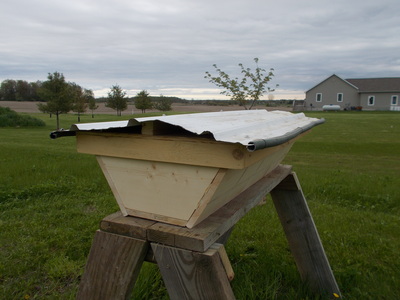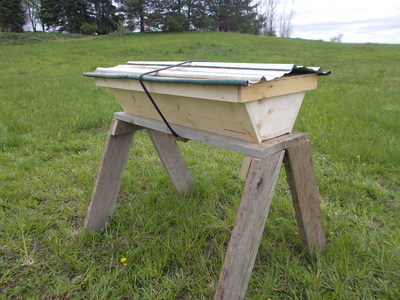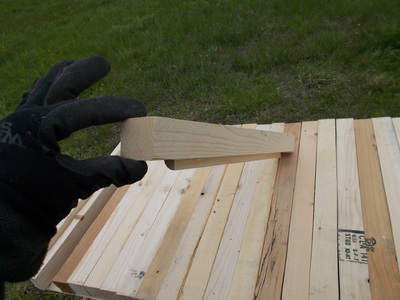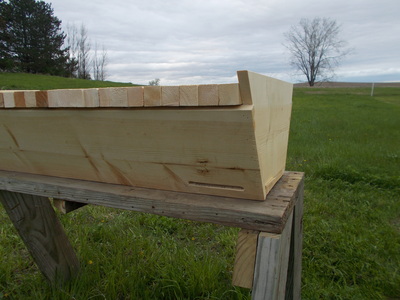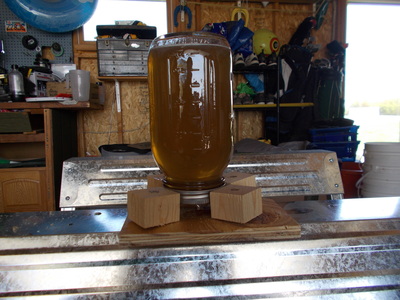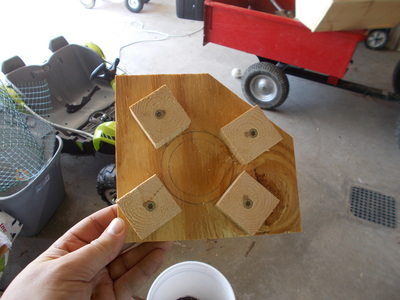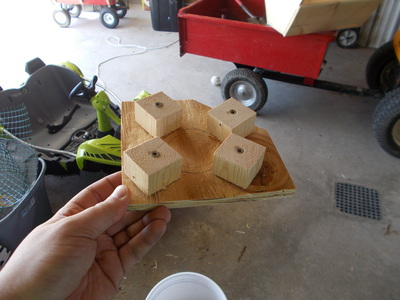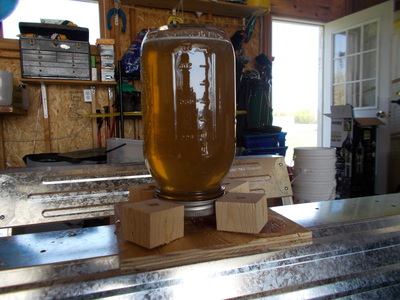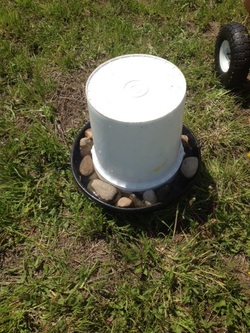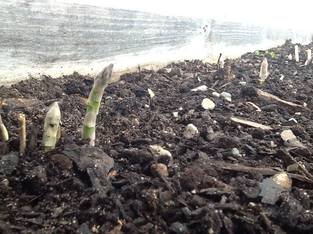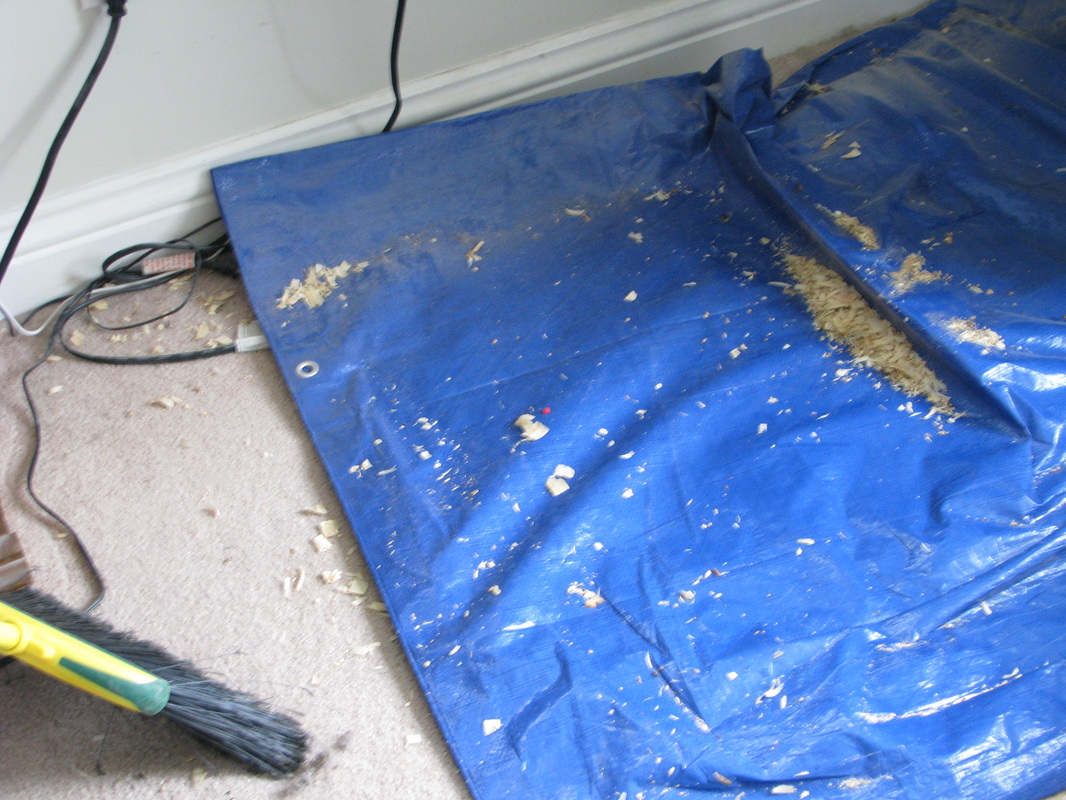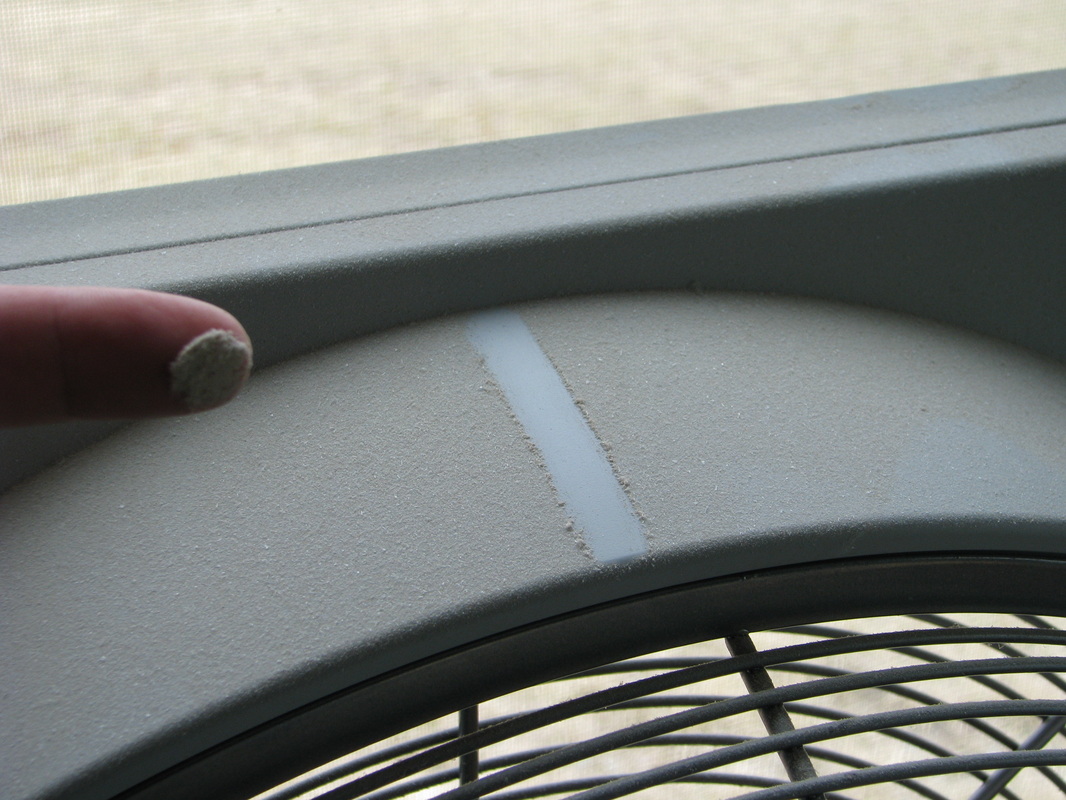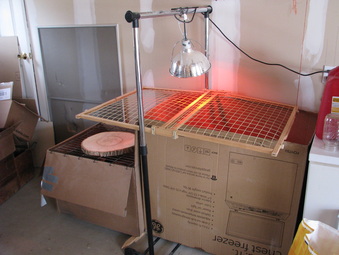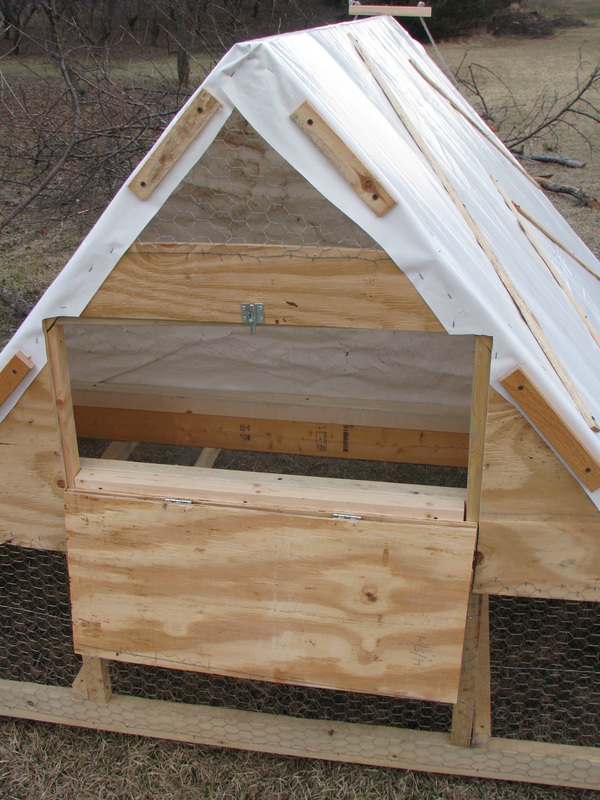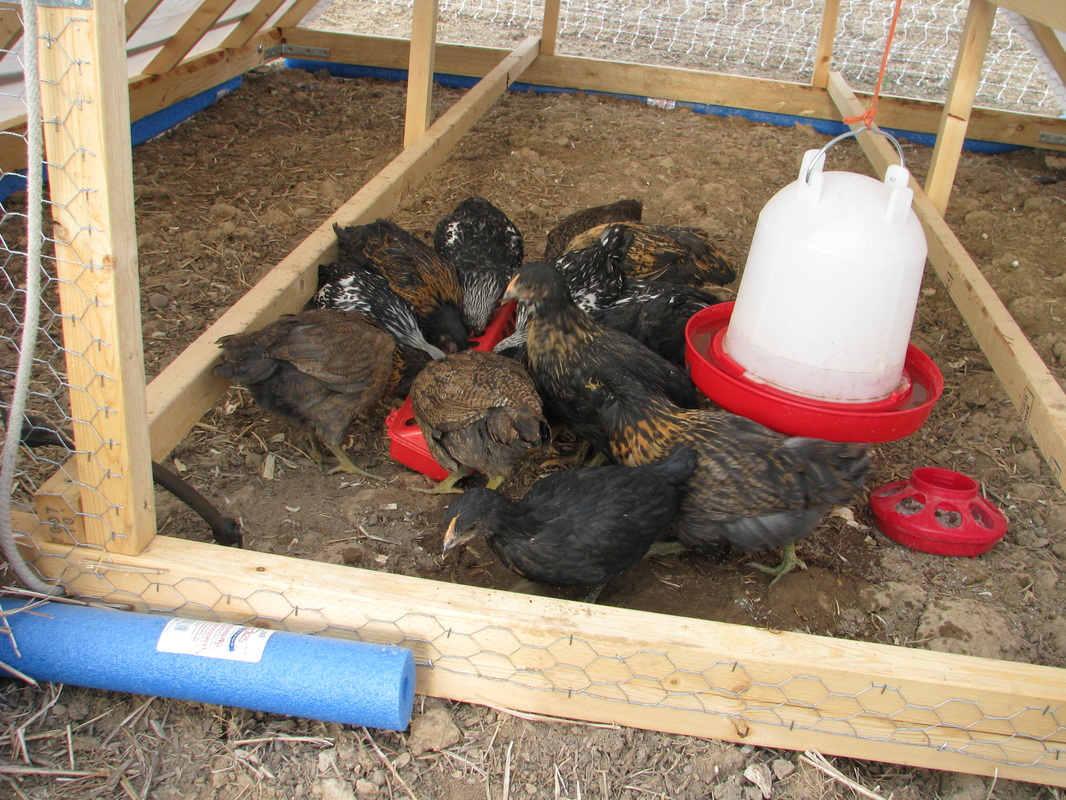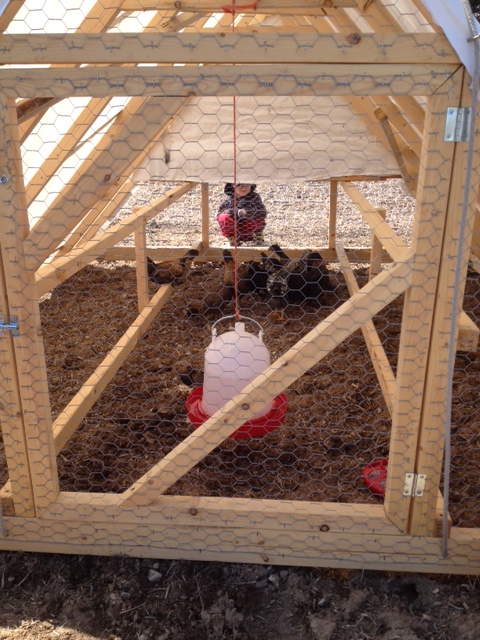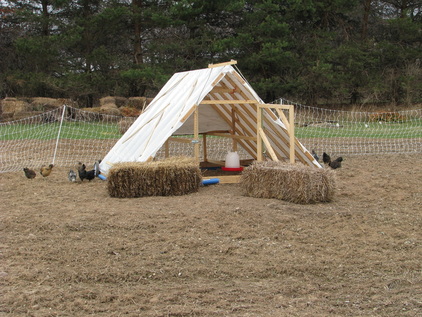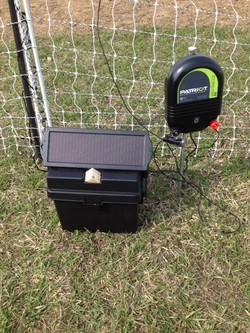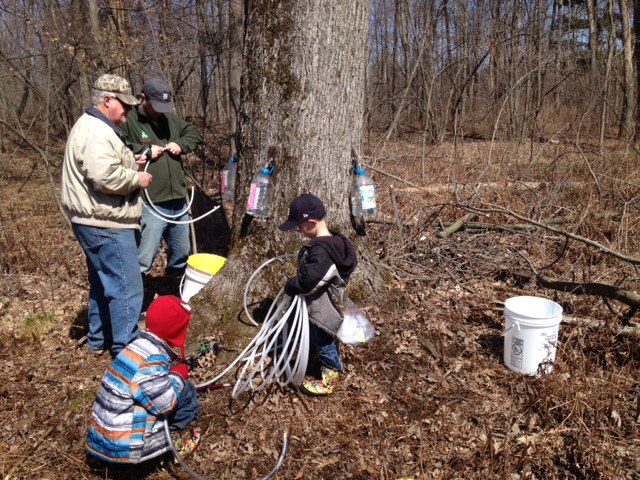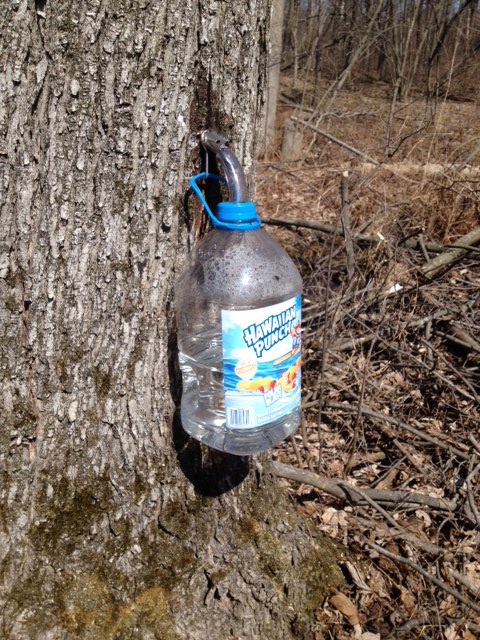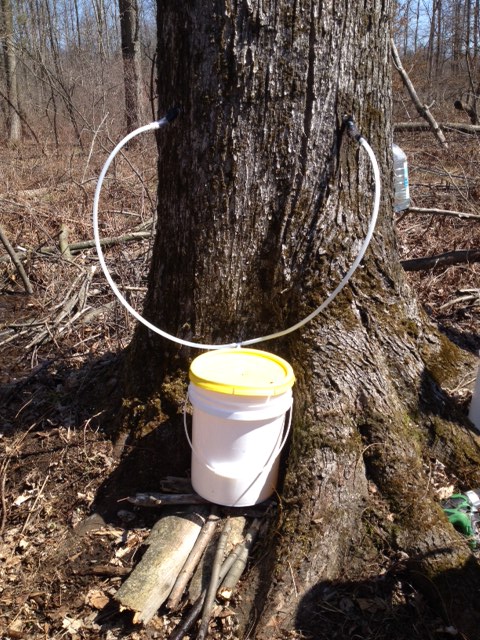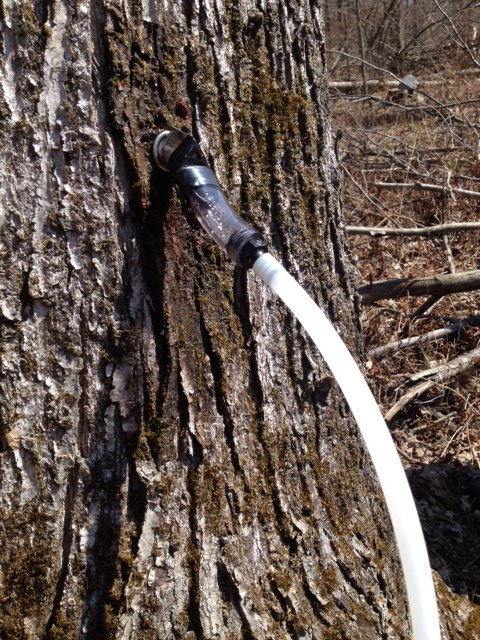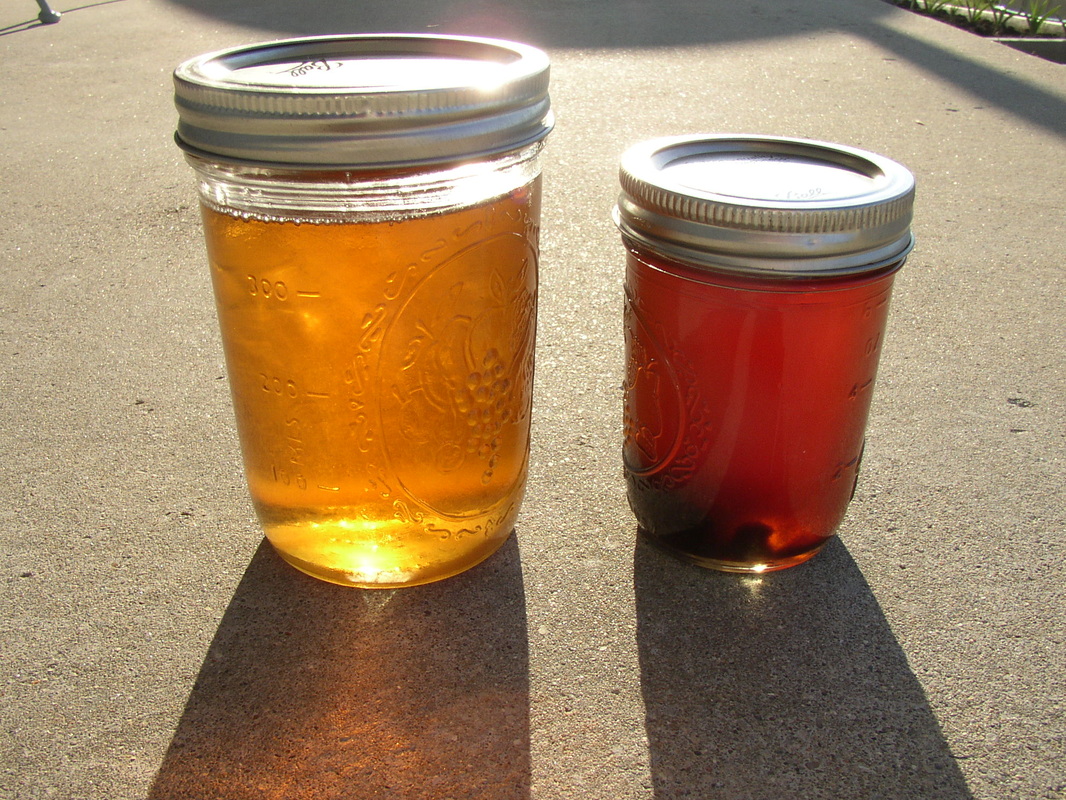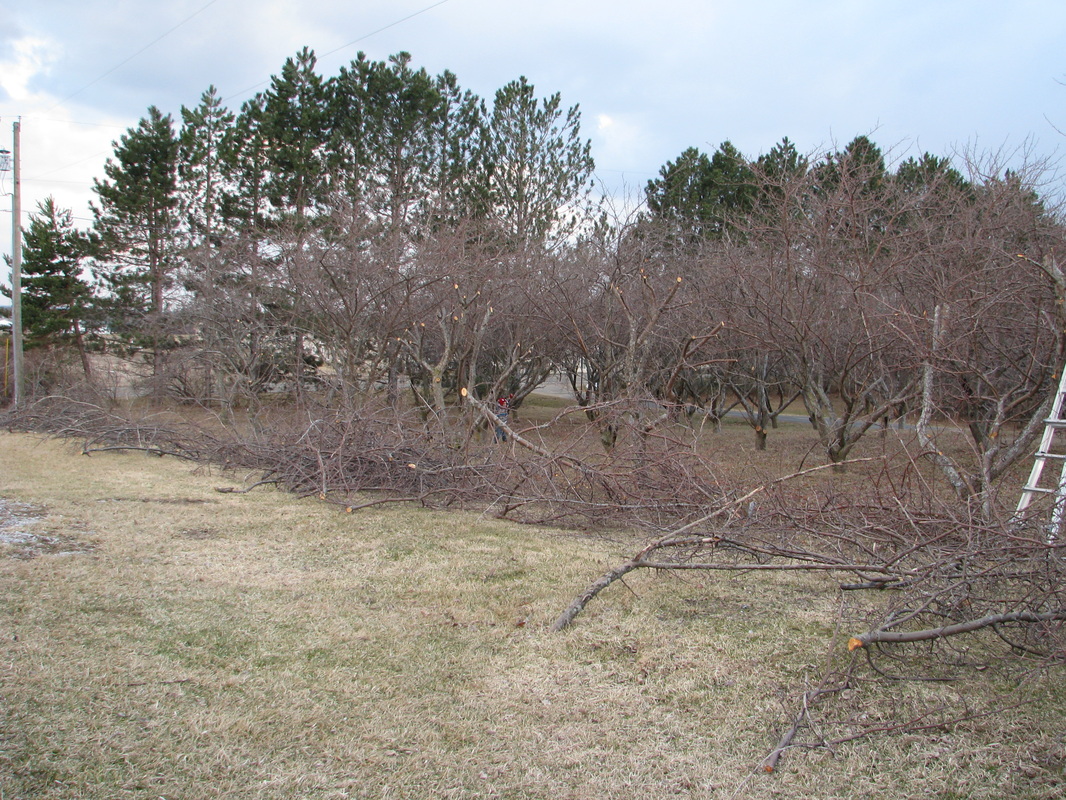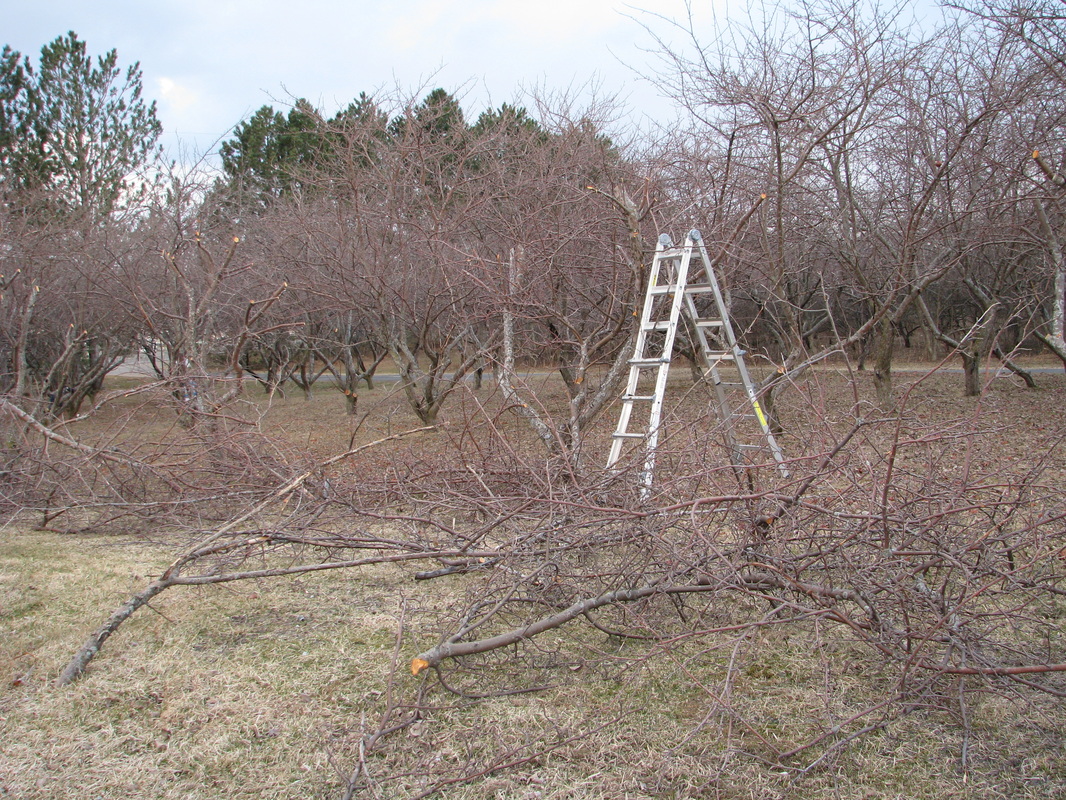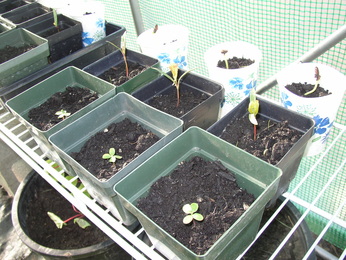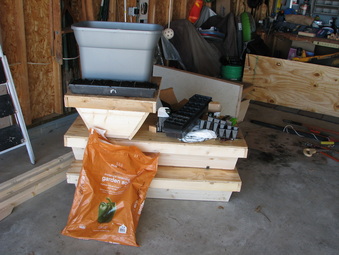- Bees. After our only top bar hive failed to survive the winter, we made a difficult decision to give beekeeping a break for the year. Then, we were pleasantly surprised when we were contacted by a local apiary to house some of their beehives on our property. The 24 NUCs were delivered today, and are nestled in the back corner of our property. Even though they aren't our bees, it is nice to know that we will still have plenty of honeybees pollinating our flowers and veggies this year, as well as the most local honey possible!
- Ducks. The 8-week-old Pekin drakes were processed for meat last Friday. We decided to keep three female ducks as egg layers, but they won't actually start laying eggs until July or August. We are also brooding a handful of 2-week old female ducks to keep as layers.
- Geese. We successfully hatched 6 goslings from the incubator, and they are already 3 weeks old. We moved them out on pasture and they are happily mowing the lawn for us. The 4 goslings mow more grass in the same shelter as 25 chicks! We also have 2 more eggs in the incubator scheduled to hatch late next week. Also, Mama Goose FINALLY decided to go broody yesterday and she is setting on a clutch of eggs. We haven't checked, but there should be 6-7 eggs under her.
- Layer Chickens. Due to the late winter this year, the layers had to spend a few extra weeks in their winter coop. But they have finally been moved outside and are happily munching on grass and weeds, digging up worms, and chasing bugs. Yesterday, we also had at least one chicken decide to go broody (on the same day Anastasia the Goose went broody). We should have lots of baby birds wandering around in 3-4 weeks!
- Meat Chickens. The meat chickens are in the brooder and should be ready to be moved outside on Monday. These birds will be ready to be processed in late June. This is the only batch of meat chickens we plan to raise this year.
- Quail. We added quail to our bird mix a few weeks ago. Right now we are just eating the eggs, but once we are able to move them out of the garage and house them on pasture, we will have eggs available for purchase. At some point we will also have quail available to purchase for meat.
- Turkeys. We will be raising traditional broad-breasted turkeys this year instead of heritage breeds (unless specifically requested). We will order the turkeys around Memorial Day, so there is still time to place an order.
